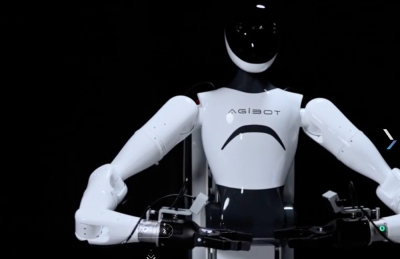SHANGHAI, March 25 — Chinese robotics start-up Agibot plans to produce up to 5,000 humanoid robots this year, matching the output target set by Elon Musk’s Optimus project, a senior executive said.
The Shanghai-based company, also known as Zhiyuan Robotics, aims to deliver between 3,000 and 5,000 robots, a sharp increase from fewer than 1,000 units last year, according to Yao Maoqing, a partner at Agibot and president of its embodied intelligence unit, according to a report published in the South China Morning Post today.
The expansion reflects the rapid growth of China’s robotics industry.
China’s industrial robot production rose 27 per cent year on year to 91,088 units in January and February, while service robot output climbed 36 per cent to 1.5 million units, government data showed.
Founded in 2023, Agibot has become a key player in Shanghai’s robotics sector, operating a facility in the Lingang New Area.
The company plans to open a new plant in Pudong district, boosting its monthly production capacity to over 400 robots.
“This year, we aim to deploy new products in industrial scenarios, replacing humans in specific tasks to create tangible customer value,” said Yao.
He estimated that household adoption of humanoid robots would take about five more years.
Agibot was co-founded by Peng Zhihui, a former participant in Huawei’s “Genius Youth” programme, which recognises top young talent.
He is seen as a key figure in China’s efforts to become a robotics powerhouse.
Yao, a former executive at Google’s Waymo and Chinese electric vehicle maker Nio, said China has advantages in humanoid robotics, including a strong hardware supply chain and a large pool of artificial intelligence talent.
He noted that production costs remain high but are expected to drop as manufacturing scales up and component costs decrease.
He said widespread adoption could become viable once unit costs approach 50,000 yuan (RM30,600).
Agibot’s product line includes Yuanzheng, a bipedal humanoid robot for commercial use; Genie, a dual-armed wheeled robot; and Lingxi, a smaller humanoid designed for developers and consumers.
In January, the company marked its 1,000th robot milestone, comprising 269 wheeled units and 731 bipedal robots.
The start-up has completed at least eight funding rounds, attracting investment from major venture capital firms, industry giants such as BYD and Beijing Automotive Group Company (BAIC), and government-backed funds.
Agibot is currently valued at around 10 billion yuan.
Agibot is also tackling data scarcity, a key challenge in robotics.
The company has established a data collection centre in Shanghai, where about 100 robots generate 50,000 high-quality motion data records daily.
“To achieve general intelligence, robots require significantly more data so that we can verify scaling laws and expect emerging capabilities once data reaches billions of tokens,” Yao said.
The company is committed to open-source data, industry collaboration, and simulation-based data generation.
Earlier this month, Agibot introduced “Genie Operator-1,” a general-purpose embodied foundation model aimed at improving robots’ multitasking capabilities.







